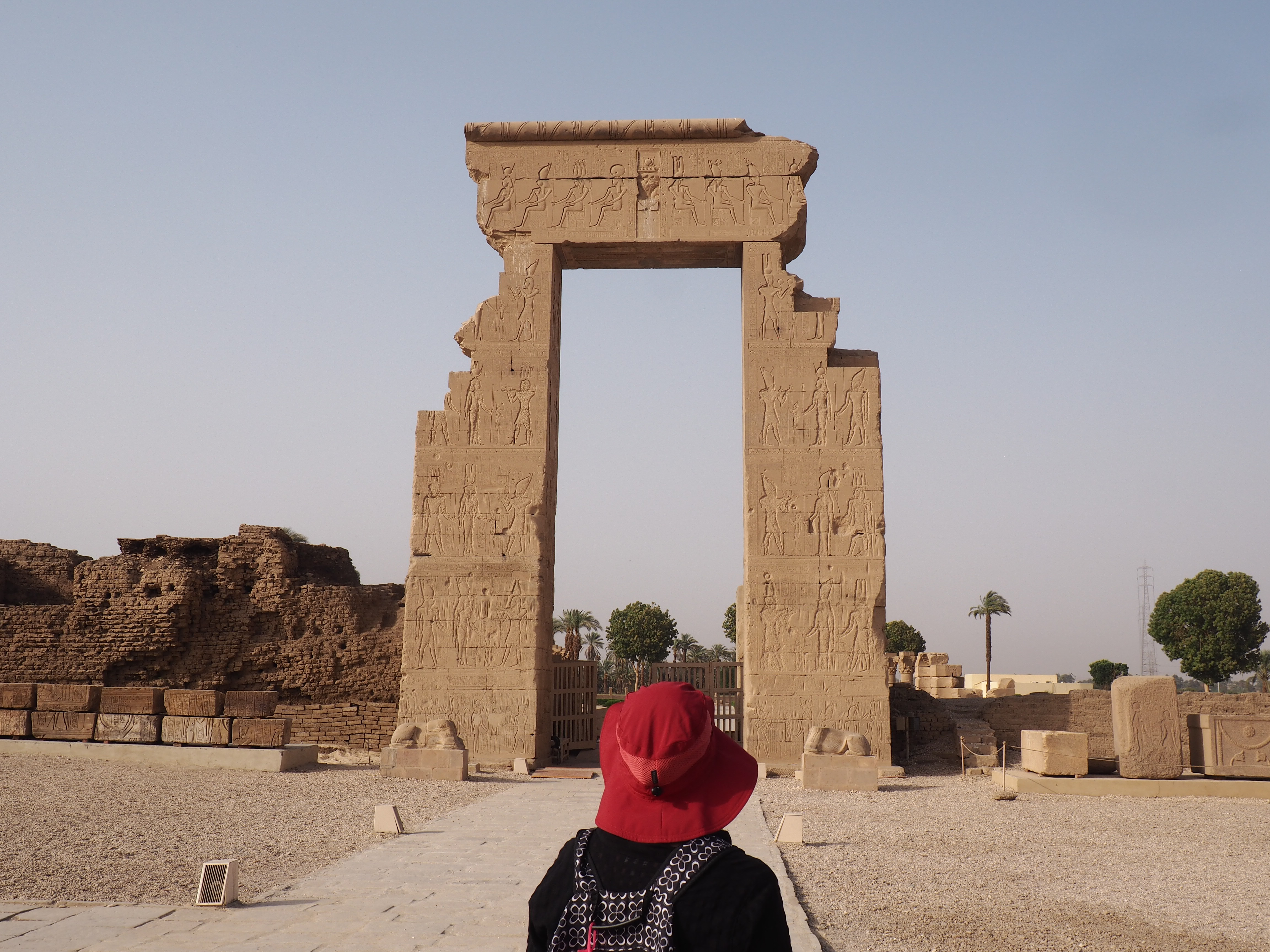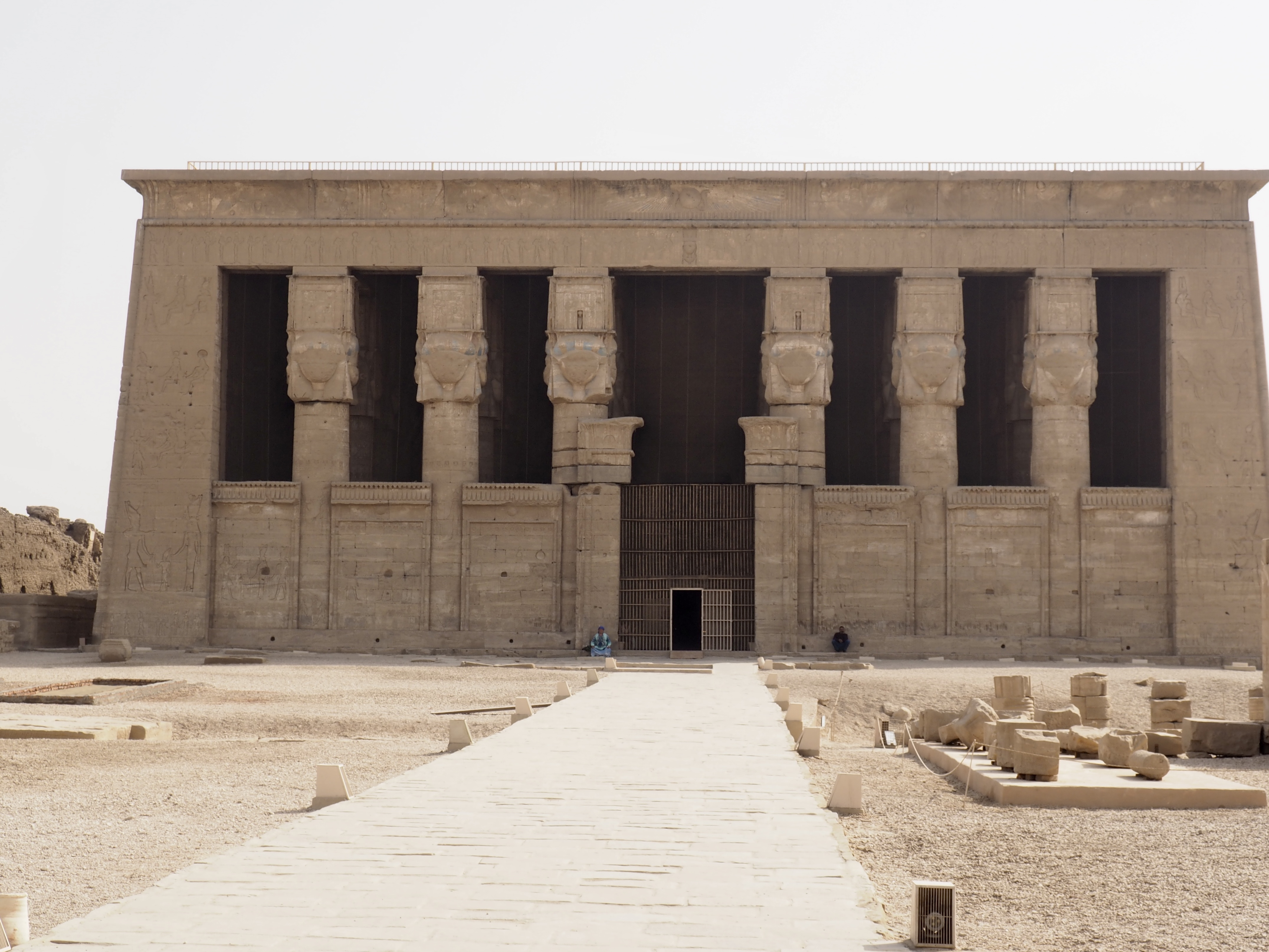
Construction in the Greek (Ptolemaic) and Roman periods introduced solid walls in between the columns of temples to provide more space for communication, for performance, for what the state had to say, as this was religious and political information and it was religion that provided legitimacy to the crown and confirmed the status of the Pharaoh as a god incarnate. As rulers coming from foreign lands, the Greeks and Romans needed plenty of room to create their spin on things. Although the Dendera complex had its beginnings in the Middle Kingdom, what has survived is overwhelmingly from Greek and Roman times.
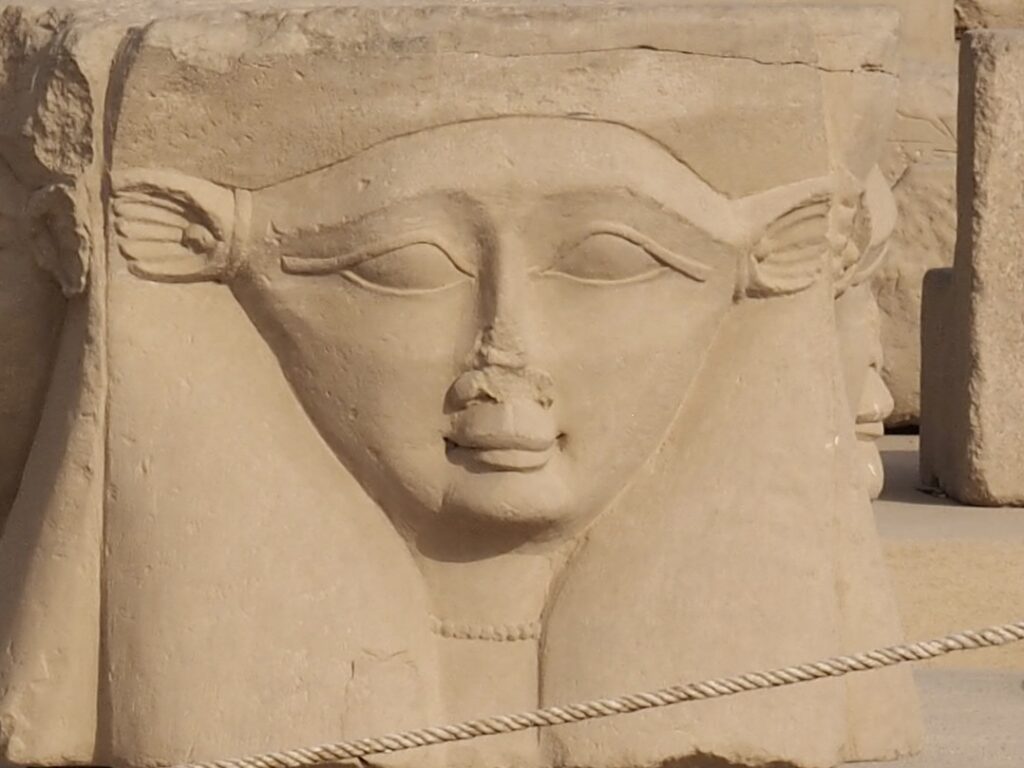
The principle surviving part of the complex is the Temple of Hathor (above). The goddess Hathor, taking the form of a cow, was both the nursemaid and the wife of Horus (the god who looks like a falcon). Horus is the son of Isis and Osiris and his story is central to Egyptian religion, as his task is to avenge the death of his father Osiris at the hands of his uncle Seth. As you may recall (🤔), Isis searched the world for the dismembered body of her husband, reassembled him (adding a critically missing member by fashioning it out of gold), and conceived Horus before Osiris took his place as the god of the underworld. Horus was then entrusted to Hathor to succor and raise. She then became his wife. Phew.

Her temple is remarkably well preserved although, in fairness, it’s only two millennia old . . .

and has benefited from a recent thorough cleaning.


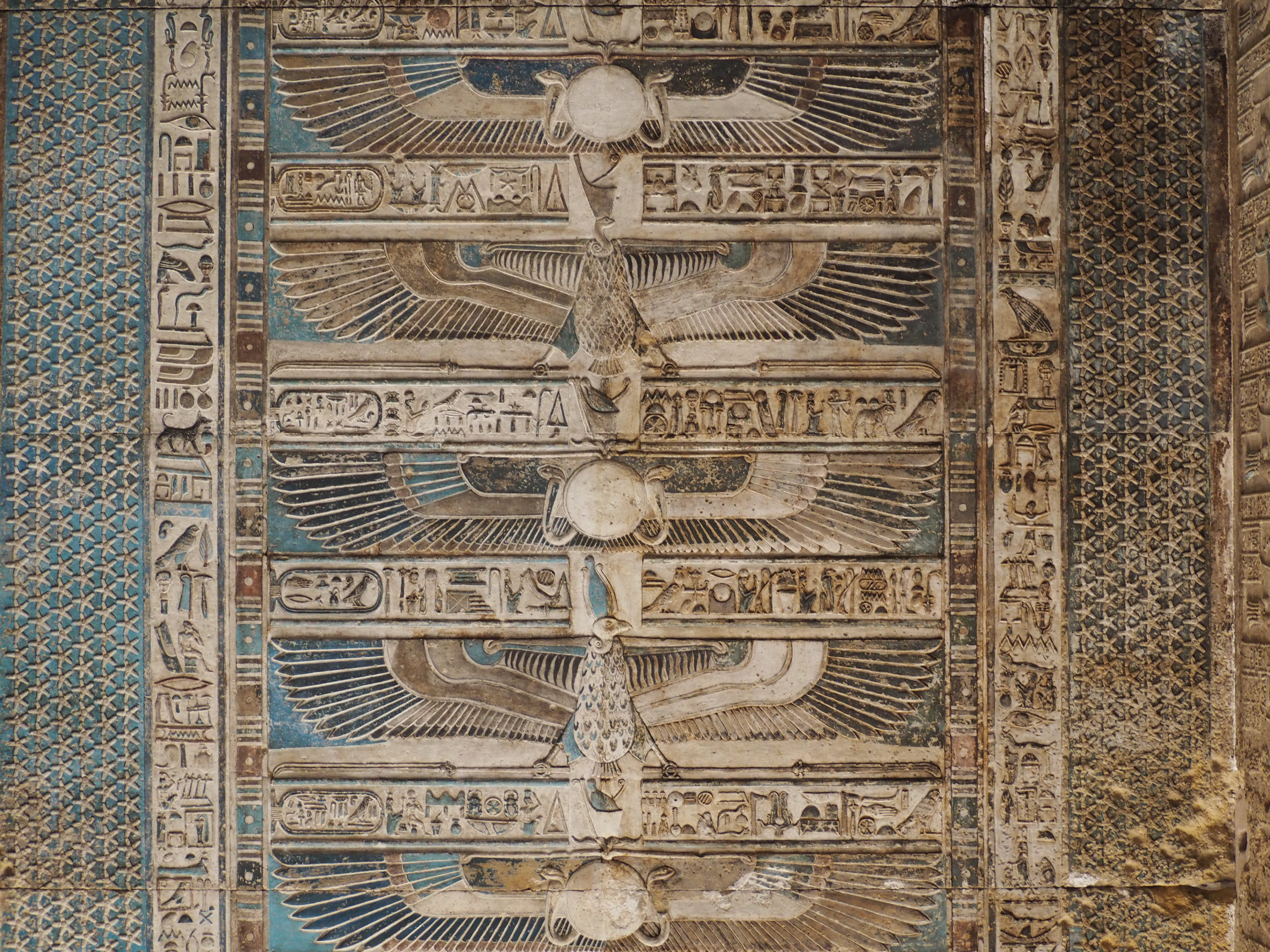

Every available surface is densely covered with magnificent engravings, paintings and hieroglyphics, including an incredibly high ceiling. (Photos courtesy of a high powered zoom lens.)
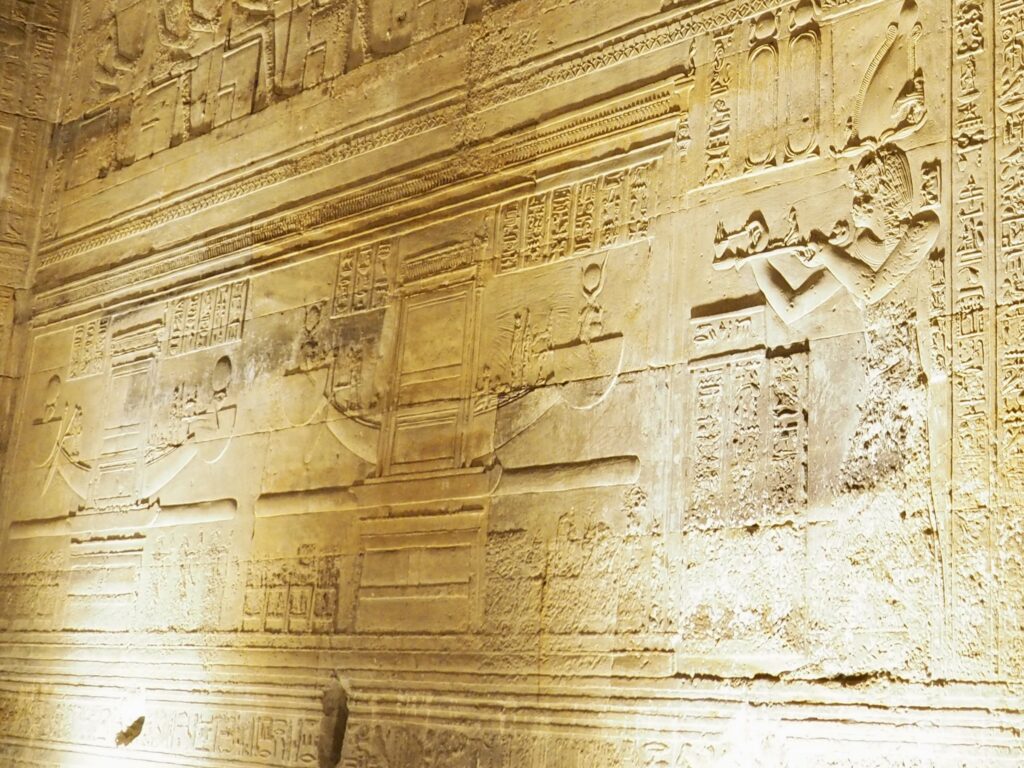
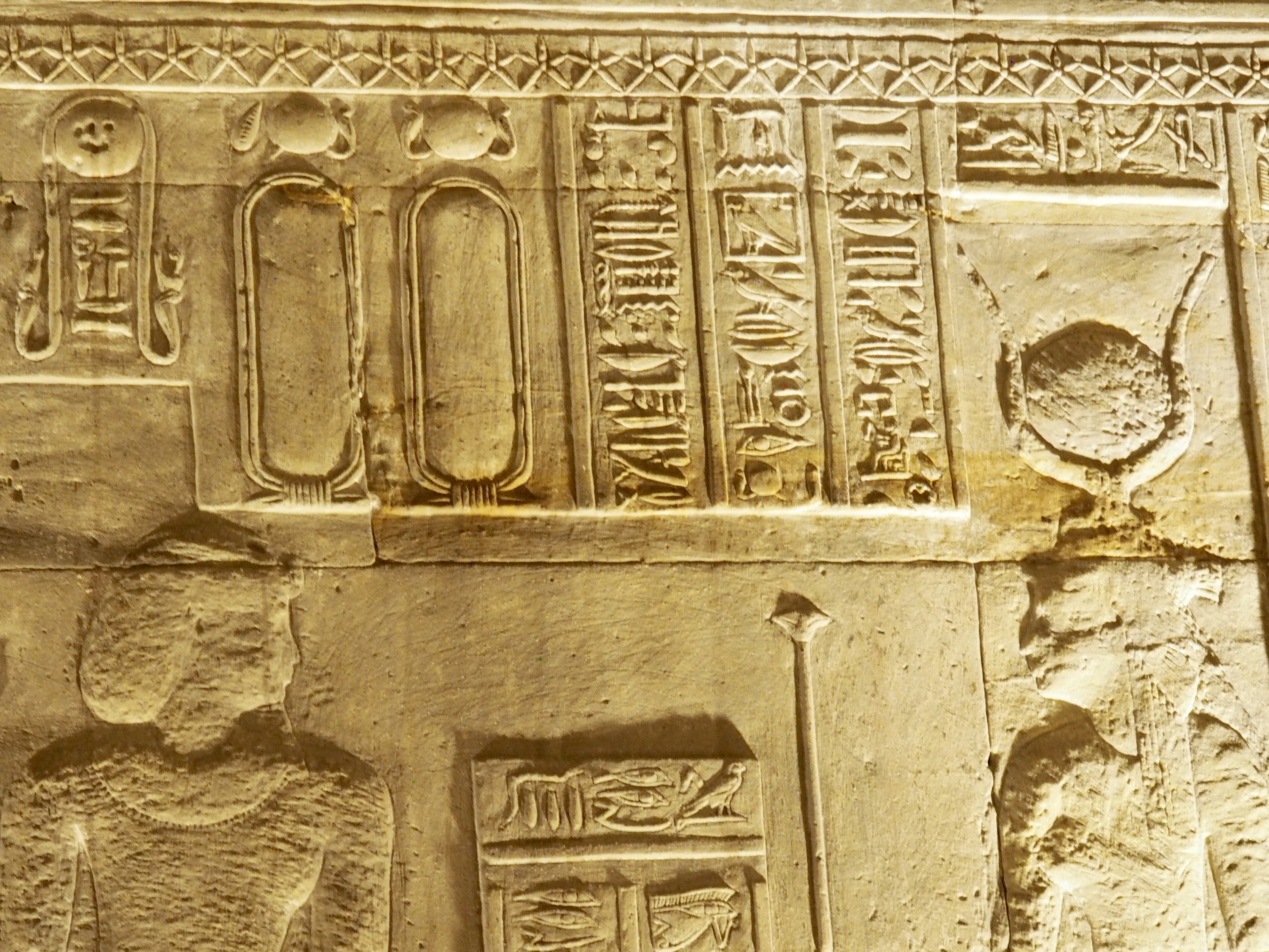
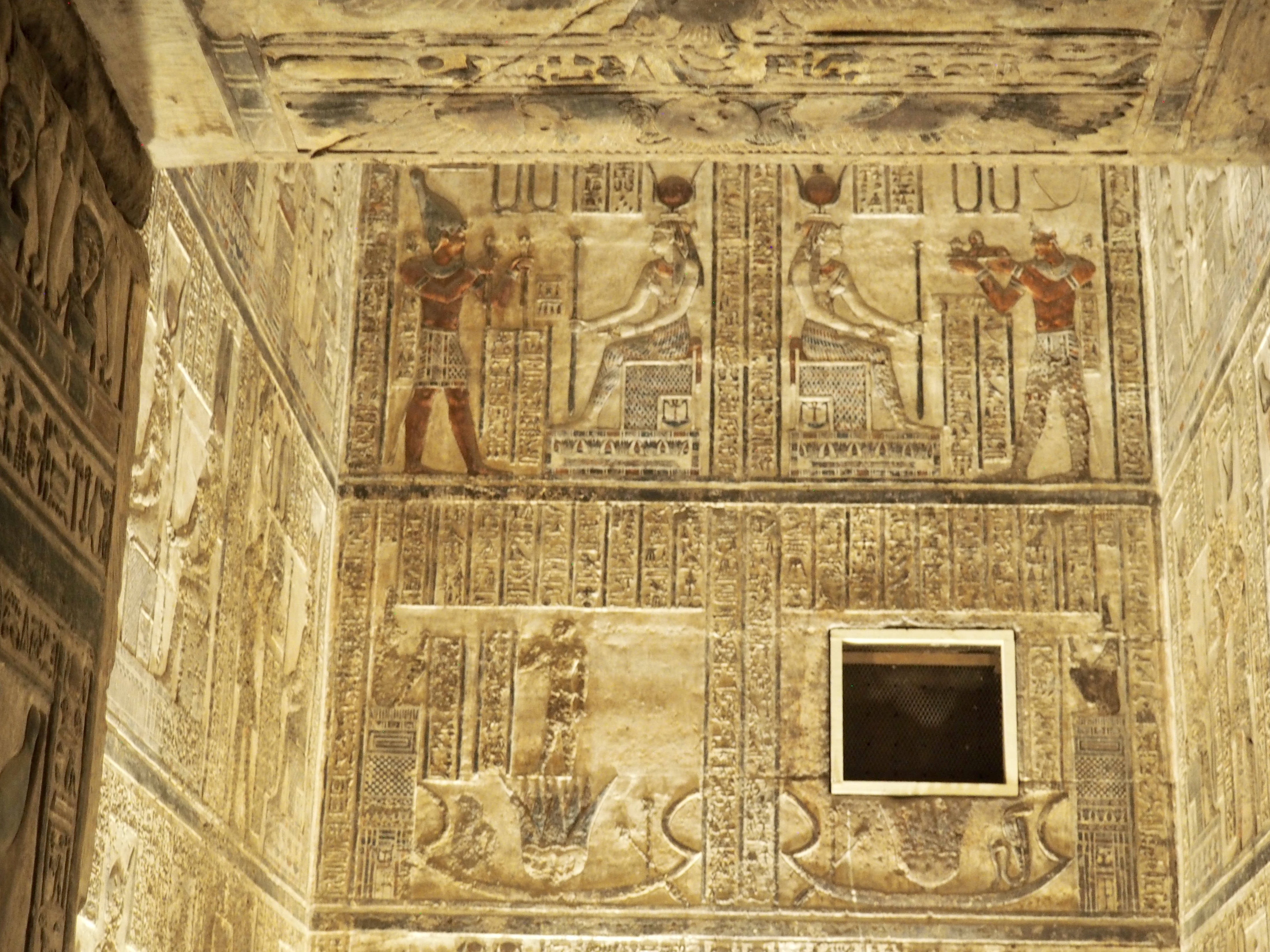


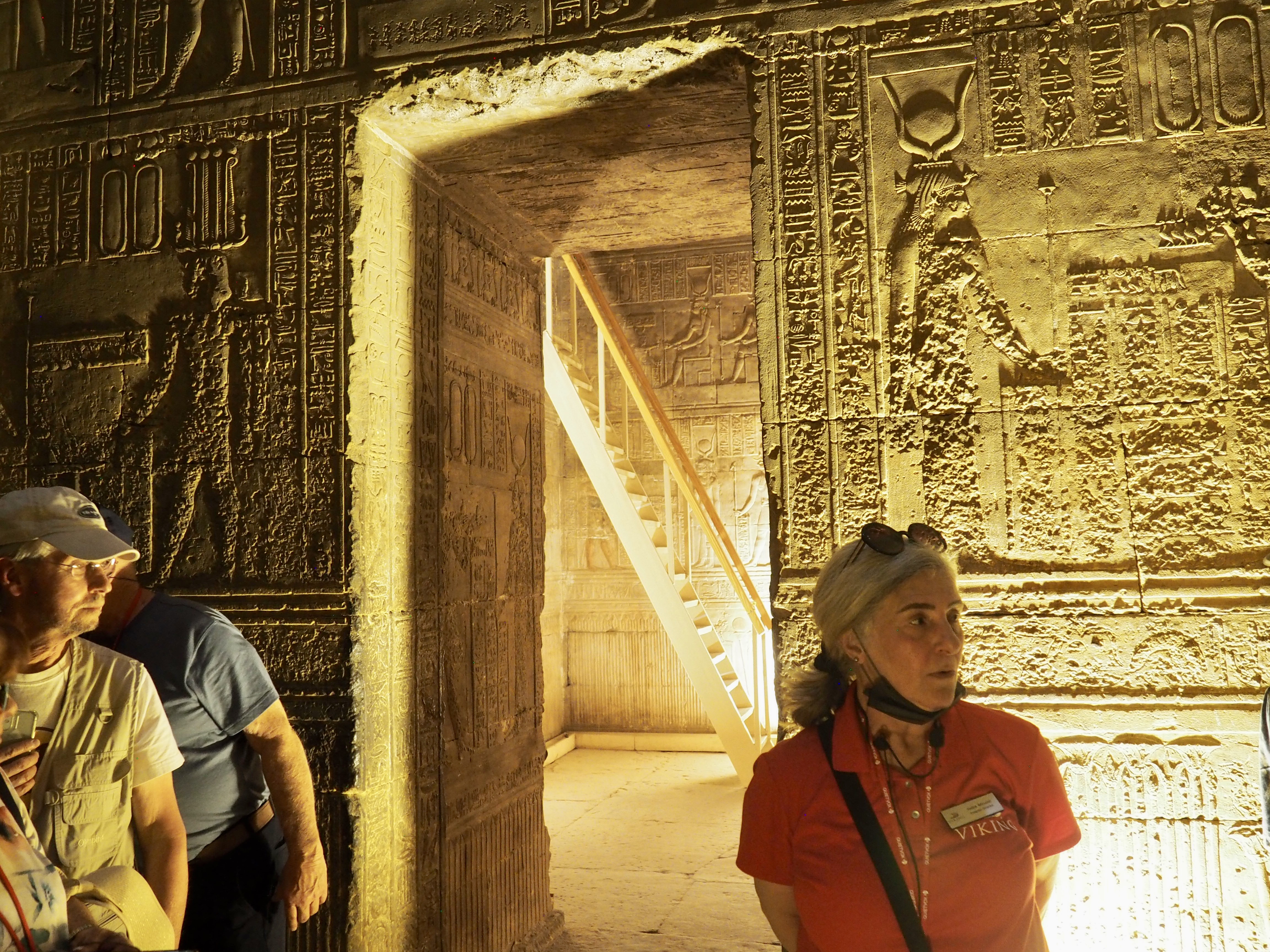
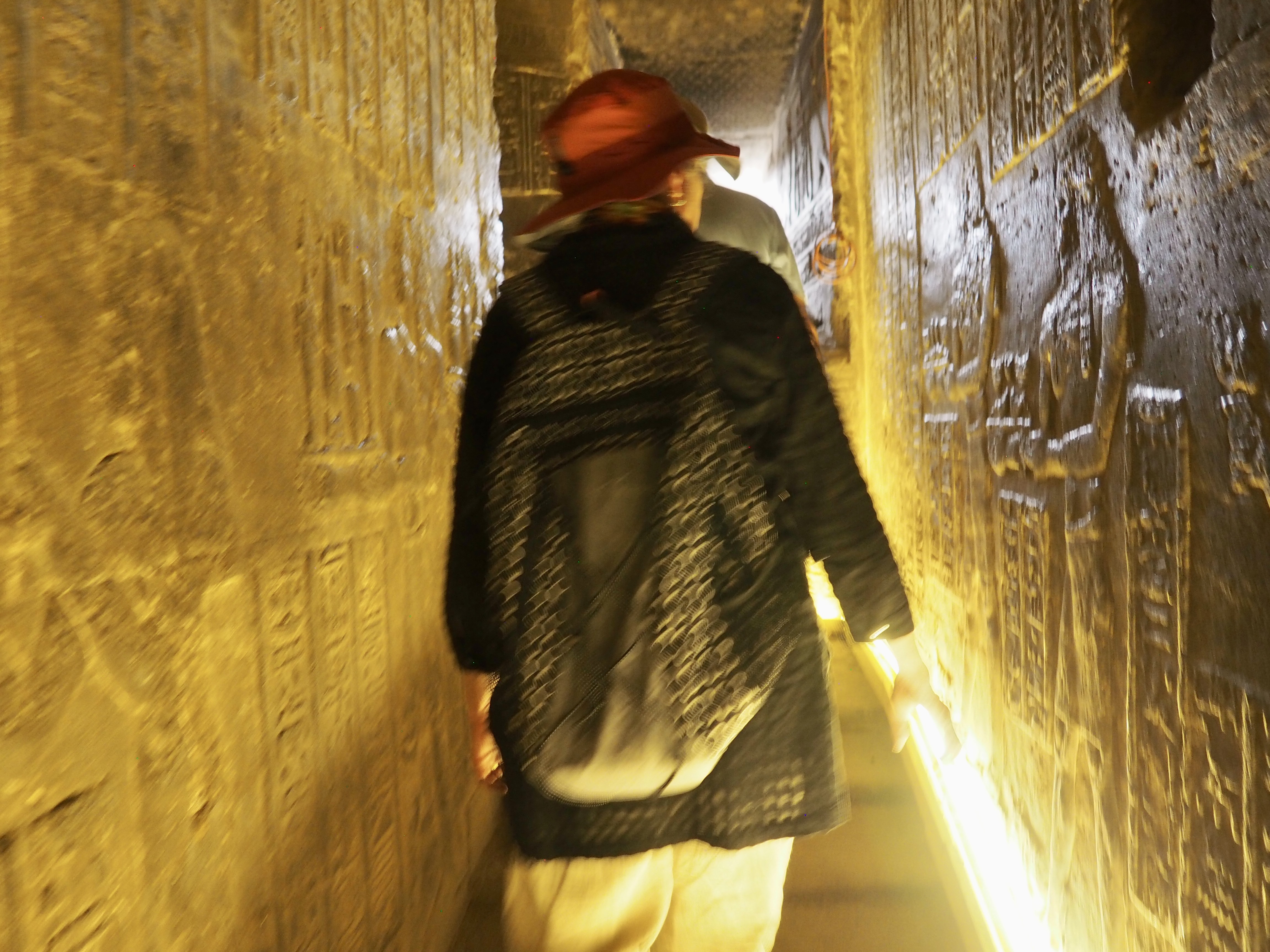
Secret passageways and chambers abound, facilitating the movement of priests throughout the complex.

Exterior surfaces are also intricately covered with images and text, but in greater relief.


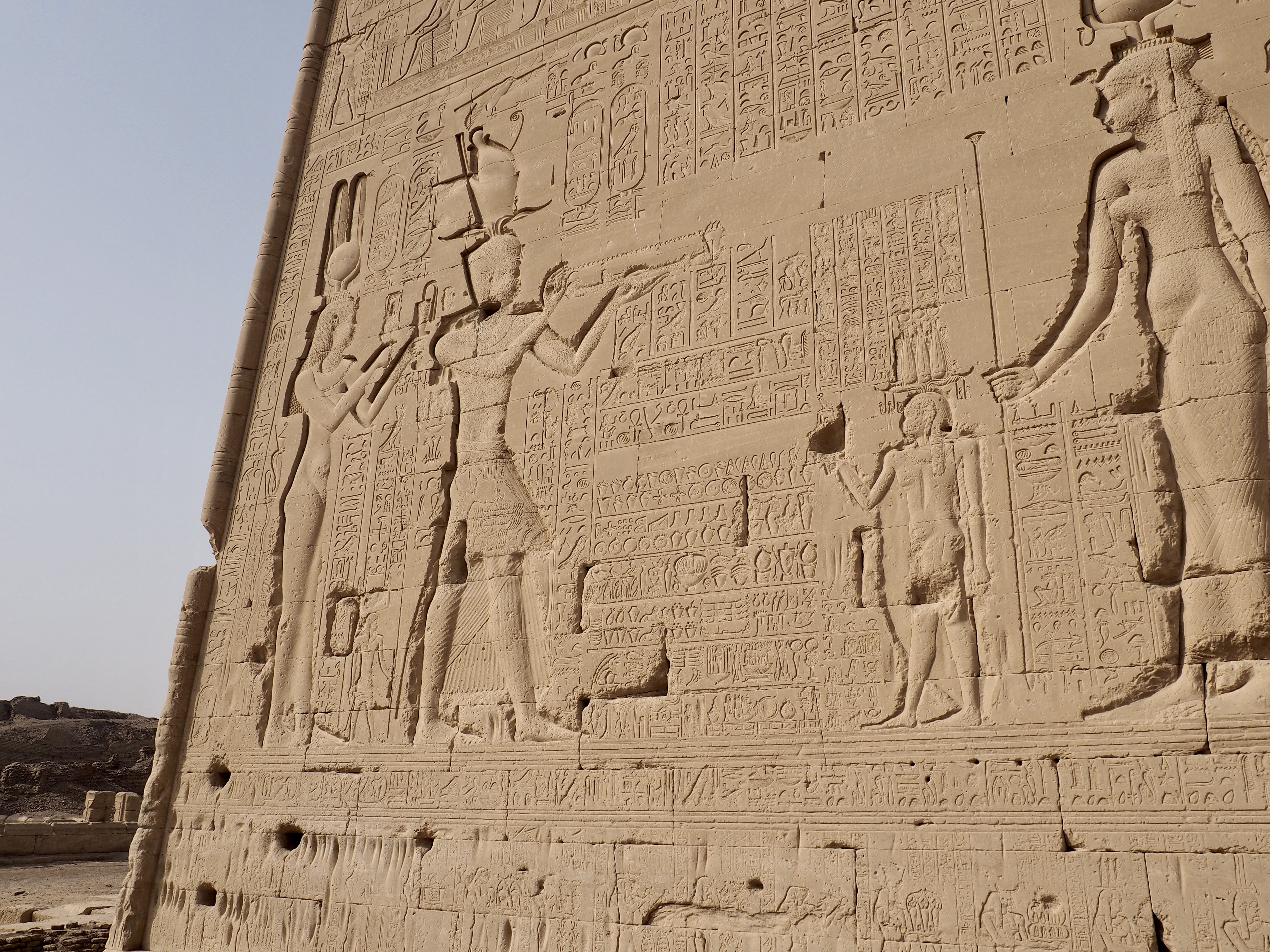
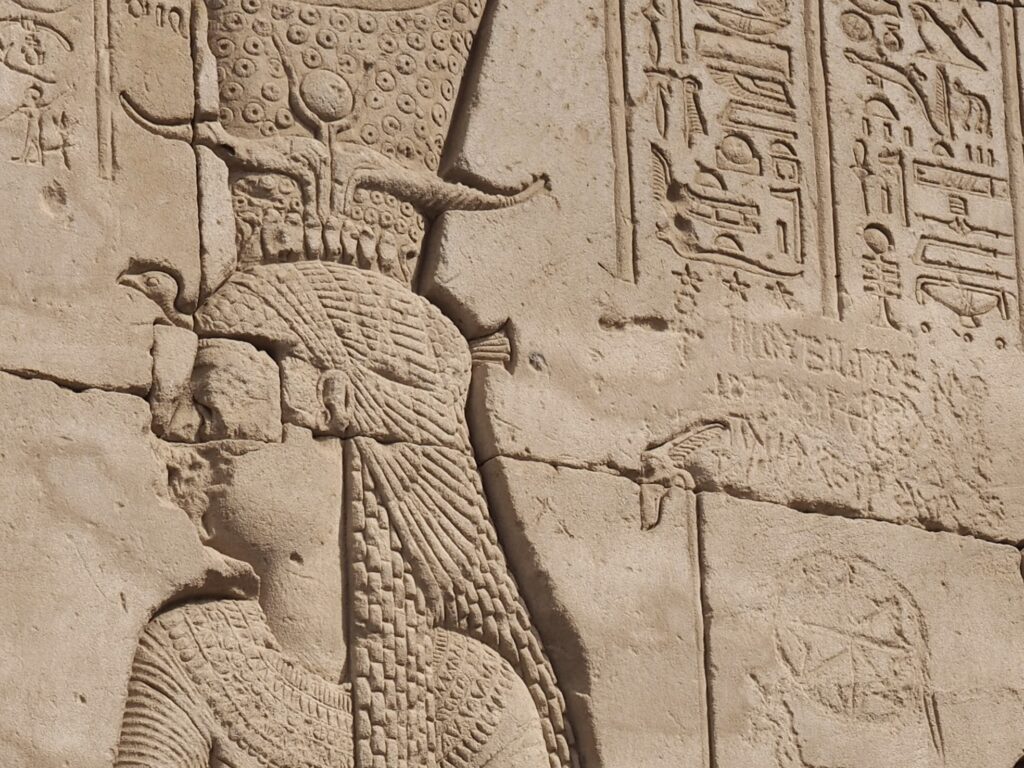

In addition to being a god of music and laughter, Bes was a household protector, especially of pregnant women (and childbirth) and of children. A jolly old fellow was he.
